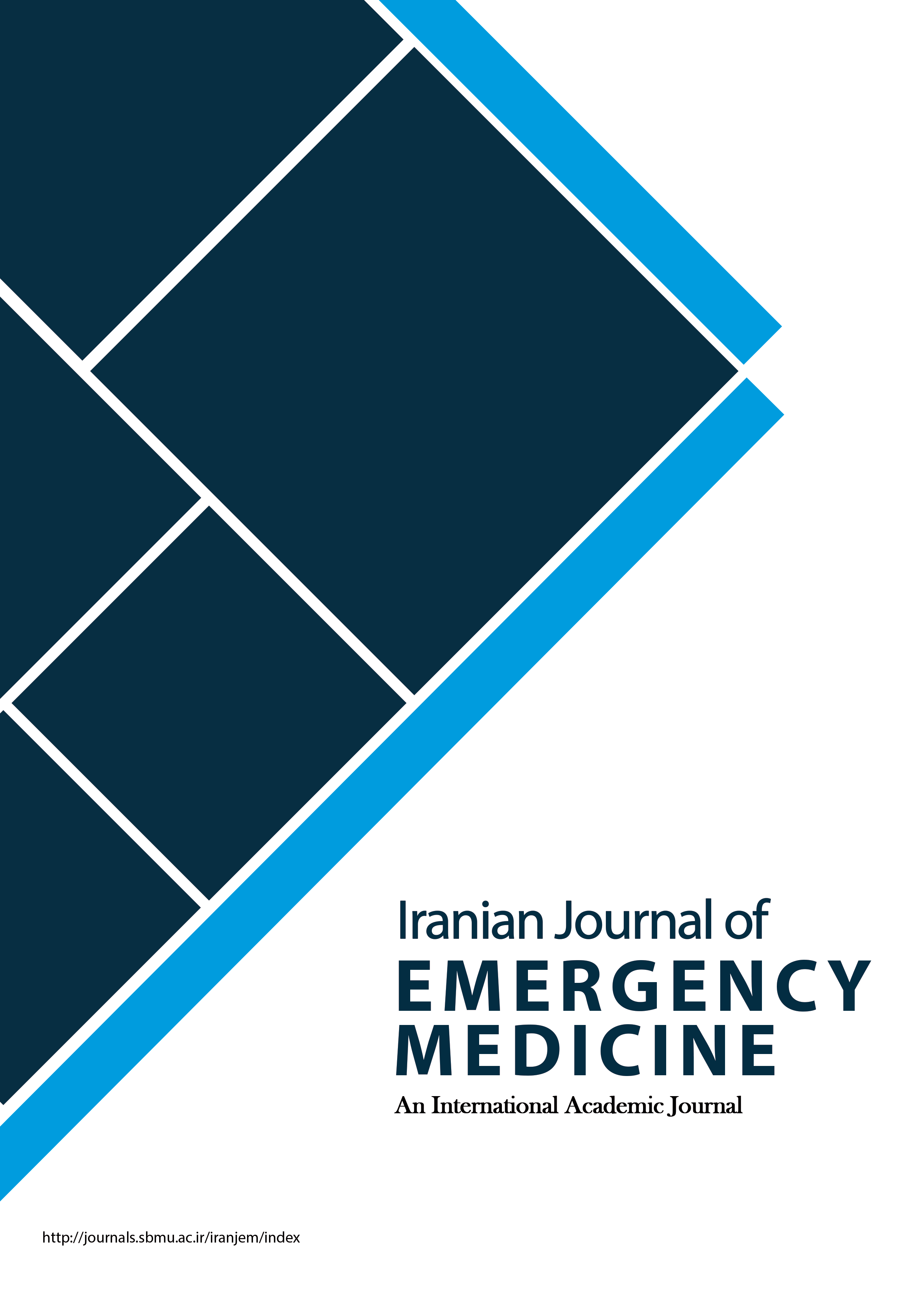Prevalence of Arcuate Foramen among Emergency Department Visitors; an Epidemiologic Study
Iranian Journal of Emergency Medicine,
Vol. 4 No. 2 (2017),
30 March 2017,
Page 51-46
https://doi.org/10.22037/ijem.v4i2.14861
Introduction: Arcuate foramen anomaly is an anatomic variation in the first thoracic vertebrae that forms a space for passing of vertebral artery. Considering the role of this bony bridge in migraine development and its effect on prevalence of various types of pain in head, shoulder, and neck areas, as well as its importance in screw placement on the lateral mass of atlas, the present study evaluated the prevalence of this anomaly among those presented to the emergency department (ED) of Poursina Hospital, Rasht, Iran. Methods: The present study is a cross-sectional one, carried out on patients over 18 years of age that visited ED of Poursina Hospital, Rasht, Iran, in 2015 and underwent lateral neck radiography using census method. Data of the patients were gathered using their medical profile or by asking them on the phone, and recorded in a pre-designed checklist. Data were analyzed with the aid of SPSS version 24 and chi-square and independent t-test statistical tests. P-values less than 0.05 were considered as significant. Results: 1146 patients with the mean age of 37.95 ± 15.88 years were studied (69.2% male). Mean age was 36.05 ± 15.26 years among men and 14.21 ± 16.44 years among women (p < 0.001). The overall prevalence of arcuate foramen was calculated to be 9.6% [95% confidence interval 7.89 – 11.30; 110 patients (74.5% male)]. This anomaly had a prevalence of 10.34% in men and 7.93% in women (p > 0.05). Conclusion: Based on the results of the present study, the prevalence of arcuate foramen anomaly was estimated to be 9.6% in Guilan province using lateral neck radiography. Its prevalence rate was 10.34% in men and 7.93% in women. Considering this prevalence rate, presence of this anomaly should be considered as a possibility in patients with complaints of head, shoulder, and neck pain.



